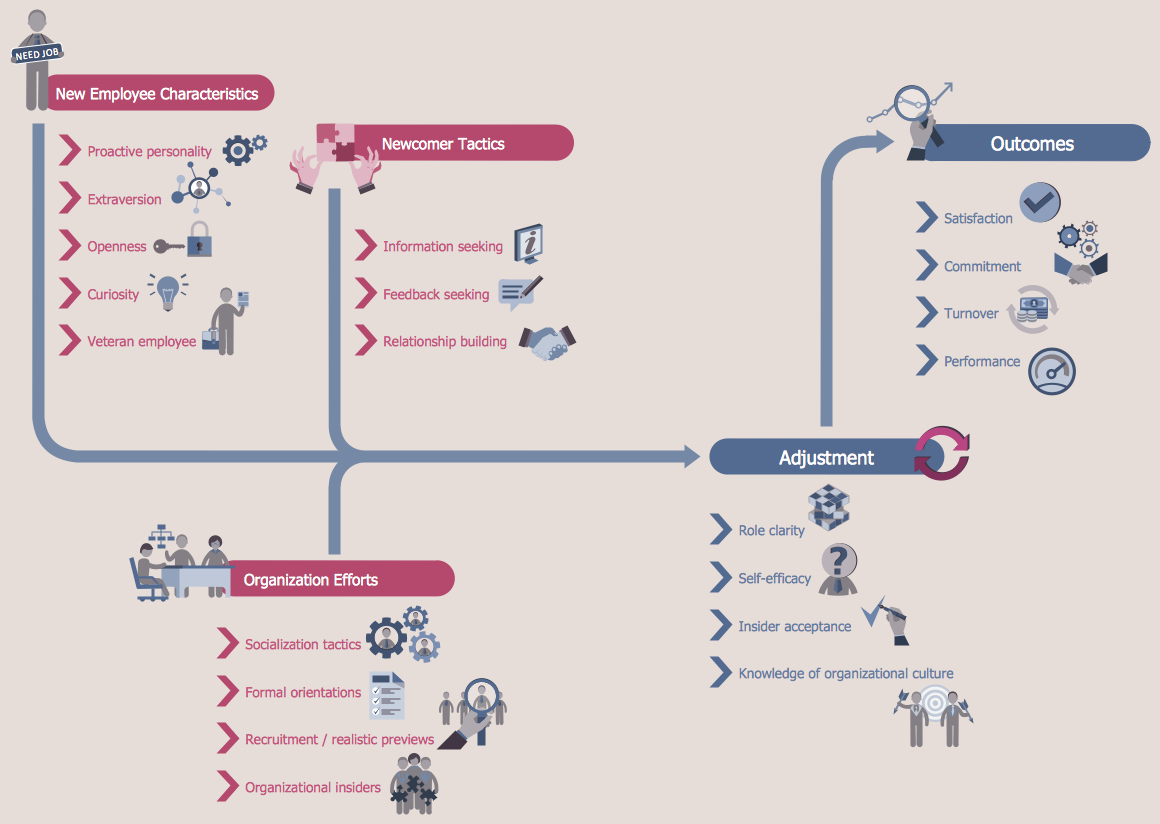Human resources is the term given to the people who make up the employee workforce of an organization or company. It was initially used simply as a synonym for manpower or labour; latterly, with the advent of globalization, a cottage industry has grown regarding human resource strategy, as a way of enhancing business value through management of the workforce.
The idea of human resource management (HRM, or HR) has its roots in the human relations movement of the early 20th century. Initially, the theory was applied more towards transactional processes, such as the administration of payments, holidays and benefits. Soon the focus would turn directly to the labor force, and the idea of workplace productivity began to take importance. A gradual change in HR policy meant that workers began to be view less as cogs in a machine, subject to unrealistic production demands, and more like an asset to the company, who can be trained and rewarded in order to provide even greater productivity in their work.
In modern times, the importance of HRM has been fully accepted and integrated into working life, to the point where the HR department of a business will often be one of the largest divisions in the company. At a macro-level, HR is responsible for leadership strategies and workplace culture, adhering to labor laws, health and safety, and security. On a more individual basis, they will deal with worker grievances, performance reports, and all steps of the hiring process.
This emphasis on employee satisfaction and training is not just an altruistic notion; it has become something of a necessity due to the changing manner in which we do business. Companies have realised that constantly replacing a workforce is costly, inefficient and time-consuming - it's much more preferable to retain employee talent and knowledge, with a lower employee turnover. Business has changed in a global sense too - companies regularly trade internationally, with a wide range of partners, across different customs, cultures, and laws. As such, the modern HR department will find itself involved in the strategy behind mergers and acquisitions, diversity and inclusion, and industrial and labor relations.
It can be said that human resource management has four basic functions - staffing, training and development, motivation, and maintenance. The points below show some of the processes involved with each function.
Staffing
- Recruitment
- Interviewing
- HR networking
- Job descriptions
- Turnover reduction
- Requisition management
- Employment branding
- Candidate screening and assessment
- Recruitment scheduling
- Employment events management

Example 1. Human Resource Management
Training and Development
- Employee training
- Talent development
- Learning event management
- Performance management
- Succession planning
- Employee financial education
- Career planning
Motivation
- Payroll
- Benefits determination
- Health planning
- Retirement planning
- Employee compensation planning
- Total rewards management
- Wellness planning and maintenance
Maintenance
- Employee tax payment
- Time sheets
- Safety records
- Leave forms
- Insurance payment
- Absence management
- Claims and appeals management
- Personal financial planning
- Employees' dependents verification
- HR reporting
- Flexible spending account administration
- Employee records management
- Employee life events management

Example 2. Human Resource Development
With such a large and varied workload, it can be useful for an HR manager to design and create business process maps, that illustrate a specific process within the company. These can take the form of flowcharts, infographics or workflow diagrams. Specific diagrams work better with certain processes - for instance a flowchart acts a solution to a given problem; each step of the solution is represented by a box, from which multiple connections can flow dependent on the decision made at that step. An infographic is used as a graphical representation of data or knowledge, and act upon the human visual capability of spotting patterns and trends. All aspects of HR management can be mapped with their use, from macro to micro level - the versatility of flowcharts mean that one can be used to chart data flow through the payroll software system, or a more esoteric diagram can show HR management response and strategy in a given situation.
The advantages of business process mapping are numerous. They can be used as a plan, to try and stop initial mistakes with implementation; you see processes as part of a bigger picture, and can adapt them for certain scenarios; it can help you eliminate unnecessary steps, or speed up/automate parts of the process. Presenting data in visual form creates a unified message or strategy, and allows for easy distribution amongst team members.

Example 3. Human Resources Flowchart
With the new HR Flowcharts solution for ConceptDraw PRO, all these diagramming options and advantages are available to you. A comprehensive selection of predesigned vector stencils libraries allow you to create eye-catching infographics relating to any human resource management process. Also included are standardized flowchart notation symbols, meaning your diagrams will be relevant and understood by all business associates. We try to make things easy for you at ConceptDraw, so you will also find flowchart and workflow templates inside the solution to help you get started with your own design. Using the HR Flowcharts solution, you can create professional looking HRM business process diagrams in a matter of moments.
Great tips, many thanks for sharing. I have printed and will stick on the wall! I like this blog. Docker Owast Container
ReplyDeleteThank you for your feedback. We create our products to make your business easier for managing.
Delete